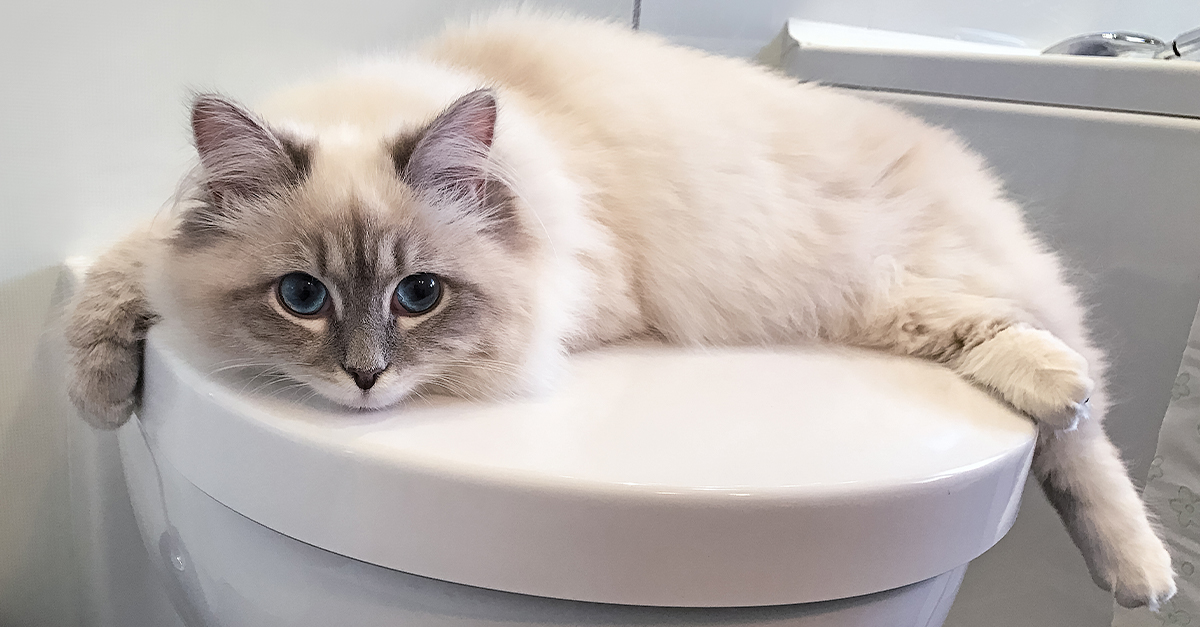Why You Mustn't Flush Cat Poop Down Your Toilet - Preserve Your Pipe Health
Why You Mustn't Flush Cat Poop Down Your Toilet - Preserve Your Pipe Health
Blog Article
We've noticed the article on How to Dispose of Cat Poop and Litter Without Plastic Bags directly below on the internet and thought it made good sense to discuss it with you in this article.

Introduction
As cat owners, it's important to bear in mind how we throw away our feline pals' waste. While it may seem hassle-free to flush pet cat poop down the bathroom, this technique can have damaging consequences for both the setting and human health and wellness.
Alternatives to Flushing
Thankfully, there are safer and a lot more responsible methods to get rid of cat poop. Think about the complying with options:
1. Scoop and Dispose in Trash
One of the most typical technique of throwing away feline poop is to scoop it into a biodegradable bag and throw it in the trash. Be sure to make use of a devoted trash inside story and get rid of the waste without delay.
2. Usage Biodegradable Litter
Select naturally degradable cat clutter made from products such as corn or wheat. These trashes are eco-friendly and can be safely disposed of in the garbage.
3. Bury in the Yard
If you have a yard, take into consideration hiding pet cat waste in a marked location away from vegetable yards and water resources. Make sure to dig deep adequate to avoid contamination of groundwater.
4. Install a Pet Waste Disposal System
Purchase a family pet waste disposal system especially made for feline waste. These systems use enzymes to break down the waste, minimizing odor and ecological influence.
Health Risks
In addition to environmental concerns, flushing cat waste can also position wellness threats to people. Feline feces may include Toxoplasma gondii, a bloodsucker that can create toxoplasmosis-- a potentially serious ailment, specifically for expectant females and people with damaged body immune systems.
Ecological Impact
Purging feline poop presents dangerous virus and bloodsuckers right into the water system, presenting a considerable danger to water environments. These impurities can negatively impact aquatic life and concession water quality.
Conclusion
Responsible family pet ownership prolongs past supplying food and shelter-- it likewise includes appropriate waste management. By refraining from purging pet cat poop down the toilet and selecting alternate disposal approaches, we can lessen our environmental footprint and secure human health and wellness.
Why Can’t I Flush Cat Poop?
It Spreads a Parasite
Cats are frequently infected with a parasite called toxoplasma gondii. The parasite causes an infection called toxoplasmosis. It is usually harmless to cats. The parasite only uses cat poop as a host for its eggs. Otherwise, the cat’s immune system usually keeps the infection at low enough levels to maintain its own health. But it does not stop the develop of eggs. These eggs are tiny and surprisingly tough. They may survive for a year before they begin to grow. But that’s the problem.
Our wastewater system is not designed to deal with toxoplasmosis eggs. Instead, most eggs will flush from your toilet into sewers and wastewater management plants. After the sewage is treated for many other harmful things in it, it is typically released into local rivers, lakes, or oceans. Here, the toxoplasmosis eggs can find new hosts, including starfish, crabs, otters, and many other wildlife. For many, this is a significant risk to their health. Toxoplasmosis can also end up infecting water sources that are important for agriculture, which means our deer, pigs, and sheep can get infected too.
Is There Risk to Humans?
There can be a risk to human life from flushing cat poop down the toilet. If you do so, the parasites from your cat’s poop can end up in shellfish, game animals, or livestock. If this meat is then served raw or undercooked, the people who eat it can get sick.
In fact, according to the CDC, 40 million people in the United States are infected with toxoplasma gondii. They get it from exposure to infected seafood, or from some kind of cat poop contamination, like drinking from a stream that is contaminated or touching anything that has come into contact with cat poop. That includes just cleaning a cat litter box.
Most people who get infected with these parasites will not develop any symptoms. However, for pregnant women or for those with compromised immune systems, the parasite can cause severe health problems.
How to Handle Cat Poop
The best way to handle cat poop is actually to clean the box more often. The eggs that the parasite sheds will not become active until one to five days after the cat poops. That means that if you clean daily, you’re much less likely to come into direct contact with infectious eggs.
That said, always dispose of cat poop in the garbage and not down the toilet. Wash your hands before and after you clean the litter box, and bring the bag of poop right outside to your garbage bins.
https://trenchlesssolutionsusa.com/why-cant-i-flush-cat-poop/
As an enthusiastic person who reads on Don’t flush cat feces down the toilet, I think sharing that excerpt was a good idea. Feel free to take the opportunity to distribute this blog entry if you appreciated it. Thanks a bunch for your time. Visit us again soon.
Visit Our Site Report this page